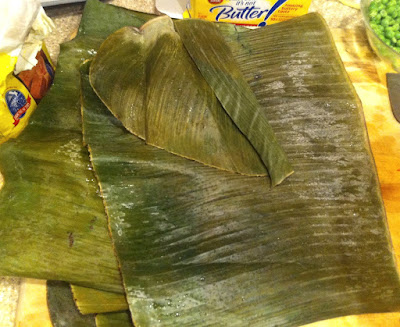I had two mangoes in the kitchen which were getting soft and I wondered what to do with them, and "mango meringue" popped into my head. I've never baked a mango pie and haven't baked a meringue in a long time, so I found what seemed to be a good recipe. Given my prior pastry crust problems, I was very pleased with how easy this crust was to make and roll and transfer to the pie plate. The pie filling could be a little bit sweeter, but it's still good as is. Making the meringue was the most fun part, and I was very pleased to see the perfectly browned peaks after it came out of the oven.
INGREDIENTS: (Serves 6)
PASTRY:
1 1/2 cups plain flour
Pinch of salt
120gms/4ozs) butter or margarine
1 tbsp castor sugar
3 - 4 tbsps iced water
FILLING:
3 ripe mangoes
4 egg yolks
2 heaped tbsp cornflour (cornstarch)
Juice of 2 limes or 2 tbsp lemon juice
1/4 cup water
1/2 cup sugar
MERINGUE:
4 egg whites (room temperature)
1/2 cup castor sugar
1/4 tsp vanilla essence
1/4 tsp cream of tartar
METHOD:
PASTRY:
Sift flour and salt.
Cut butter or margarine into flour and using finger-tips, rub in until mixture resembles fine breadcrumbs.
Mix in the sugar.
Add 3 tbsps iced water and mix to form a firm dough, adding a little more water if necessary.
Roll out pastry to line a greased 24cm/9.5" pie dish.
Fold overhanging pastry dough under itself and crimp decoratively against rim of pie dish. Prick the pastry base and side with a fork in several places to prevent air pockets when baking. Freeze for about 20 mins.
Preheat oven to 200C/400F.
Line pie shell with baking paper or aluminium foil and weigh down with dried beans or uncooked rice.
Bake in middle of oven for 20 mins, remove foil and 'weights' and return to oven to bake for a further 8 - 10 minutes or until golden brown.
FILLING:
Peel mangoes, cut flesh off and discard seed.
In a blender, puree mango flesh. (If using 'stringy' mangoes, strain with sieve to obtain a smooth puree.)
In a medium bowl, whisk together the cornflour, lime or lemon juice and 1/4 cup water until smooth. Whisk in the egg yolks.
In a medium non-stick saucepan, combine mango puree and sugar and bring to the boil over medium heat, whisking constantly.
Remove from heat and drizzle into the cornflour mixture while whisking.
Return mixture to saucepan and continue cooking and whisking until mixture turns from cloudy to glossy.
Pour mixture evenly into baked pie shell and set aside.
MERINGUE
Pre-heat oven to 175C/350F.
Beat the egg whites at high speed with an electric mixer until soft peaks form.
With mixer running, add the cream of tartar, then the sugar, a tablespoon at a time.
Add vanilla essence and beat until stiff peaks form.
Pile onto the top of filled pie and spread with a spatula, making sure to seal the meringue to the pastry edge.
To minimize "weeping", spread the meringue while the filling is still hot.
With the back of a spoon, "pull up" wisps of meringue to form a decorative pattern.
Bake for 12 - 15 mins or until the meringue is lightly browned.
HINT:
Meringue pies cut easier and better if you wet your knife blade before cutting.

















































